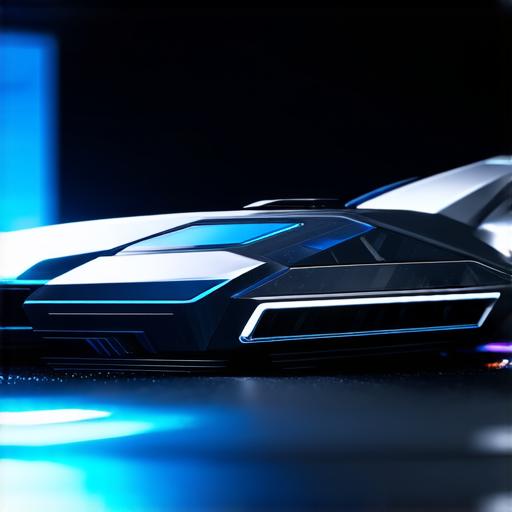When it comes to creating and managing 3D objects in Unity, there are several factors to consider to ensure a smooth and efficient development process. In this article, we will delve deeper into the topic, exploring various aspects of 3D object creation and management in Unity, including best practices, real-world examples, and frequently asked questions (
FAQs
).
Understanding 3D Object Creation in Unity
The first step in creating a 3D object in Unity is to import or create the asset. There are several options for creating 3D models, including using a 3D modeling software such as Blender or Maya, or purchasing pre-made assets from marketplaces like the Unity Asset Store.
Once you have your asset imported into Unity, you can start customizing it to fit your needs. This includes adding materials, textures, and animations, as well as adjusting the scale, rotation, and position of the object. You can also create multiple instances of the same object to create variations or add depth to a scene.
Best Practices for 3D Object Management in Unity
Effective management of 3D objects is essential for creating engaging, immersive experiences in Unity. Here are some best practices to help you manage your assets effectively:
-
Keep your project organized: Use folders and subfolders to categorize your assets by type, such as characters, environments, or effects. This will make it easier to find and access the assets you need, and also keep your project clutter-free.
-
Use version control: Version control allows you to track changes to your assets over time and revert to previous versions if necessary. This is especially useful when working with a team, as it ensures that everyone is working with the same version of an asset.
-
Optimize your assets for performance: Large 3D models can slow down your game or application, so it’s important to optimize your assets for performance. This includes reducing the number of polygons, using lower resolution textures, and minimizing the number of draw calls.
-
Use asset bundles: Asset bundles allow you to package multiple assets together and load them only when they are needed, which can improve performance and reduce load times.
-
Document your assets: Documenting your assets with clear, concise descriptions and usage guidelines can help other team members understand how the assets should be used and maintained. This is especially useful when working with a large team or when assets are frequently updated.
Real-World Examples of Effective 3D Object Management in Unity
To illustrate these best practices, let’s look at some real-world examples of effective 3D object management in Unity:
-
“The Last Of Us” Game: The creators of “The Last Of Us” game used a modular approach to building their environments, which allowed them to easily reuse assets and make changes as needed. They also used version control and asset bundles to manage their assets effectively. For example, they created different versions of the same character model to represent different stages of aging or injuries.
-
Epic Games Showcase: Epic Games uses a library of pre-made assets in their showcase, which they have optimized for performance and organized into folders for easy access. They also document their assets with clear usage guidelines and best practices for asset management. For instance, they created multiple versions of the same character model to represent different emotions or actions.
-
Unity Asset Store: The Unity Asset Store offers a wide range of pre-made 3D models and assets that can be easily imported into Unity projects. These assets are optimized for performance and can be customized to fit specific needs. Users can also manage their assets using version control and asset bundles to improve performance and reduce load times.
FAQs
What is the difference between a 3D model and a texture in Unity?
A 3D model is a 3D object that represents an item or character in a game or application. It contains information about its geometry, position, rotation, and other properties. On the other hand, a texture is a 2D image that is applied to a 3D model to give it a visual appearance. Textures can include color maps, normal maps, specular maps, and other types of images that affect how the model looks.
How do I optimize my 3D models for performance in Unity?
-
Reduce the number of polygons: Polygons are the individual triangles that make up a 3D model. Reducing the number of polygons can help reduce the overall complexity of the model and improve its performance.
-
Use lower resolution textures: Textures are the images that are applied to a 3D model to give it a visual appearance. Using lower resolution textures can help reduce the amount of data that needs to be processed, improving performance.
-
Minimize the number of draw calls: A draw call is a request made to the graphics card to render a 3D object. Minimizing the number of draw calls can help improve performance and reduce load times.
-
Use asset bundles: Asset bundles allow you to package multiple assets together and load them only when they are needed, which can improve performance and reduce load times.
How do I manage version control in Unity?

There are several tools available for managing version control in Unity projects, including Git and Team Foundation Version Control (TFVC). These tools allow you to track changes to your assets over time and revert to previous versions if necessary. To use version control in Unity, you will need to install the relevant software and configure it to work with your project.
What are asset bundles in Unity?
Asset bundles are a way to package multiple assets together and load them only when they are needed in a Unity project. This can improve performance by reducing the amount of data that needs to be loaded at startup, and also allows you to manage different versions of your assets more effectively.
Summary
Creating and managing 3D objects in Unity is essential for creating engaging, immersive experiences. By following best practices like keeping your project organized, using version control, optimizing your assets, and documenting your assets, you can create high-quality 3D models that perform well and are easy to maintain. With the right tools and techniques, you can take your Unity projects to the next level and create unforgettable experiences for your users.
